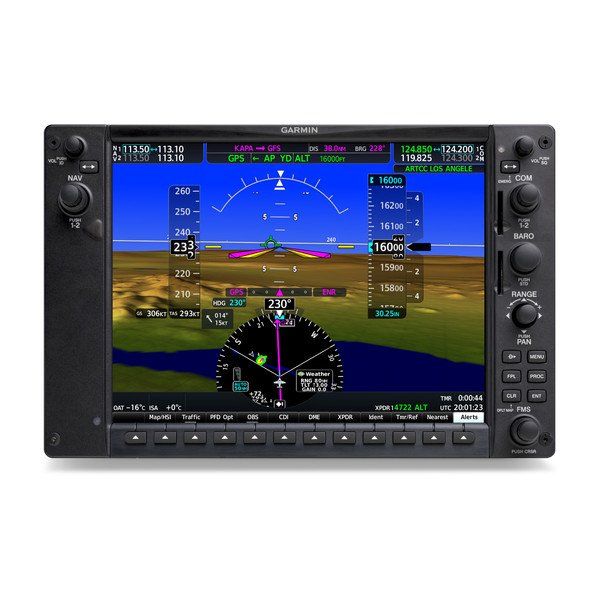
- #Fltplan go garmin how to#
- #Fltplan go garmin software#
- #Fltplan go garmin plus#
- #Fltplan go garmin download#
From TCH its 149 nm to TWF, so after reaching TWF on the departure the next leg is back to TCH where we pick up V484 to TWF. These legs are inserted after KSLC, before the Wasatch VOR (TCH) that’s four nm north of KSLC. Clearance Delivery gives us the CGULL1 departure to TWF, which we enter into the plan. A specific example is a flight from Salt Lake City to Boise we file for KSLC to TCH, V484 to TWF, V253 to BOI, KBOI. But the departure can overlap these legs. For example, departing your airport, your flight plan goes to a nearby VOR then onto an airway towards your destination. Some of these legs may not provide autopilot guidance, depending on which GPS you have, and on other assisting devices (AHARS, ADC, and magnetometers, for example).Īdding a procedure generally leaves you with a plan that has extra legs you won’t fly. This can complicate the normal sequencing of flight legs, if some of those legs don’t sequence. In addition, it may add flight legs that no longer end at a fix, but may end in an altitude, intercept, DME distance, etc. Each of these has the potential to disrupt the orderly flow of the original flight plan.

You may have added a departure, or perhaps an arrival followed by an approach. When you add IFR procedures to your flight plan you complicate what was otherwise a simple plan with point-to-point flight legs that automatically sequence when you get to the end of each one. Such as by adding extra waypoints where you may want enroute information (without actually flying through those waypoints).
#Fltplan go garmin how to#
This example illustrates the point of this article, how to use your flight plan. This is a quick way to get to the ATIS frequency and select it to find surface winds, temperatures, and other data. Just touch one of the waypoints and select Waypoint Info. This makes it easier to get information at these four fixes, such as TAFs and METARs, frequencies, and NOTAMs. If you insert those waypoints into the plan in Fig 2, you’re still going D–> KSNA but would then have four waypoints in the plan. The plan then ends at KBFL and it’s no longer a plan to KSNA. Now to go to KNLC you have to select D-> KNLC. You can’t do that in Fig 1, as that would create a plan between those two waypoints while going D–> KSNA. Suppose you want to add two intermediate points on the plan, Lemore (KNLC) and Bakersfield (KBFL). A simple flight plan to KSNA (left) altered before takeoff by going D–>KSNA. Those who live in sunny spots may feel differently.Figure 2.
#Fltplan go garmin plus#
OLED plus solar is a problem yet to be solved, it seems, but I haven’t found it makes a huge difference.
#Fltplan go garmin software#
Garmin has also started to harness the increased sharpness and vibrancy of OLED, making its software look better on the Forerunner 965’s screen.įor now there’s no solar-charging version of the Forerunner 965. There’s a difference, but not necessarily one you should hinge your decision upon. You might get something like a little under two weeks from the Fenix 7. It has an always-on display mode, and even with this engaged and several hours of GPS tracking a week factored in, the Forerunner 965 still lasted around eight days. However, we’re now at a level of efficiency where the Forerunner 965’s OLED doesn’t feel like too much of a battery life compromise. Low power consumption and excellent outdoor visibility have made MIP the practical option for Garmin for many years. MIP Garmin watches have (largely) non-lit displays that are clearer in direct sunlight, where the Forerunner 965’s OLED has to get brighter to compete with daylight.

The lead point you need to tackle when buying one of these watches is whether you will enjoy using an OLED screen watch more than an MIP one.
#Fltplan go garmin download#
This determines how freely you can download map areas, and how much music/podcasts you can store on the watch. The Forerunner 965 also has double the storage of all Fenix 7 models bar the top-end Sapphire Solar variants, with 32GB instead of 16GB. Surrounded by skyscrapers? Running in a steep valley? Multi-Band GPS will come in handy. Multi-Band GPS won’t always make a huge difference, but it’s very useful in situations that are tricky for GPS watches. It’s a standard feature of the Forerunner 965. Only the top-end Fenix 7 Sapphie Solar watches do. One part that is easy to miss when shopping for a Garmin watch - the Fenix 7 and Fenix 7 Solar do not have Multi-Band GPS. Forerunner 965 and Fenix 7 back Andrew Williams The Forerunner 965 has better features than the base Fenix 7


 0 kommentar(er)
0 kommentar(er)
